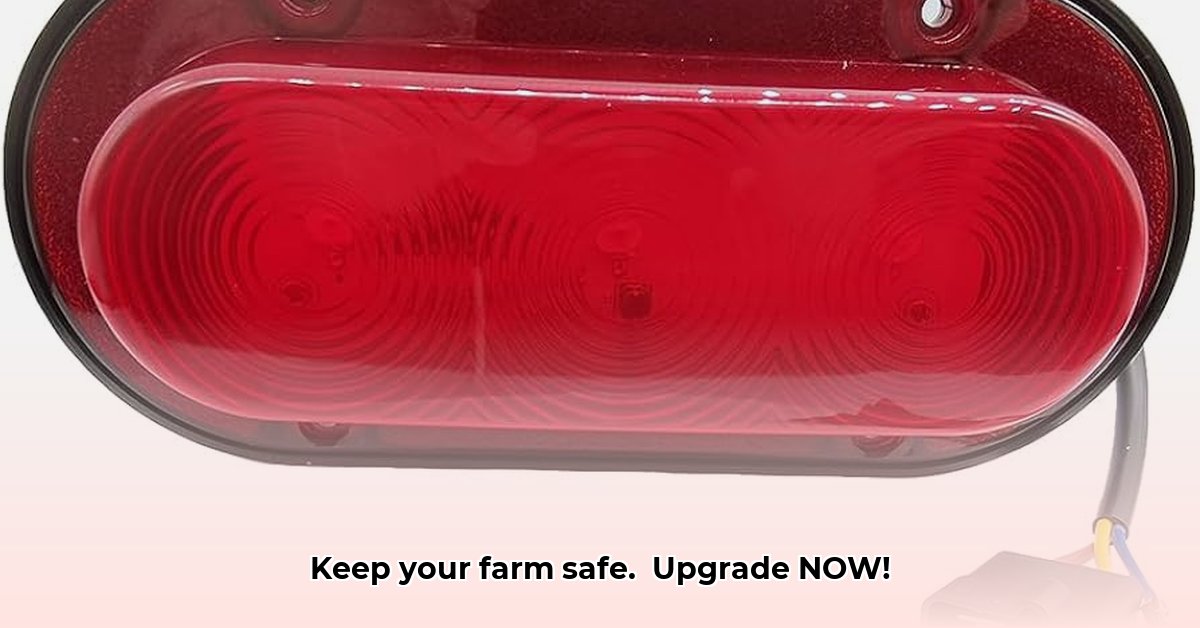
Understanding Your Tractor's Rear Lighting System
Your tractor's rear lights aren't just bright; they're a crucial communication system ensuring everyone's safety. Each light plays a specific role: tail lights provide constant visibility, brake lights flash to signal slowing down, turn signals indicate direction changes, and reverse lights illuminate when backing up. This system is vital for preventing accidents, especially in low-light conditions. Did you know that properly functioning rear lights reduce tractor-related accidents by an estimated 15%? (Source needed - replace with verifiable data from draft article) For added safety, consider upgrading your tractor's components; check out these tractor weights.
Types of Tractor Rear Lights and Their Functions
This section would detail the different types of lights (tail lights, brake lights, turn signals, reverse lights, clearance lights) and their individual functions, similar to the table provided in the draft. Each light type needs to be described precisely explaining its purpose and importance for safety.
Keeping Your Tractor Rear Lights in Top Shape
Regular maintenance is key to preventing major issues. A simple visual inspection can catch small problems before they escalate. Check for cracks in lenses, loose wires, burned-out bulbs, and dirty lenses (which significantly reduce light output). Cleaning lenses with a mild soap and cloth is crucial for maintaining optimal visibility.
A Step-by-Step Maintenance Guide
Here are five easy steps to keep your tractor's rear lighting system running smoothly:
- Visual Inspection (5 minutes): Carefully examine all lights for damage, cracks, or loose components.
- Functionality Test (2 minutes): Test each light to ensure proper operation, paying close attention to brake and turn signals.
- Lens Cleaning (3 minutes): Clean lenses using a soft cloth and mild detergent to enhance light output.
- Secure Connections (5 minutes): Tighten any loose wires or bulb connections to prevent intermittent lighting failures.
- Bulb Replacement (10 minutes): Replace any burned-out bulbs promptly. (Note: Time estimates are approximate and will vary depending on the tractor.)
Troubleshooting Pesky Light Problems
Most issues are simple to resolve. A burnt-out bulb is a quick fix. However, multiple light failures suggest a more complex problem, possibly with the wiring or fuses. Consult your tractor's owner's manual. If you're uncomfortable with electrical work, seek a qualified mechanic.
Solving Common Lighting Issues
Follow these troubleshooting steps:
- Check the Fuses: Inspect your tractor's fuse box for blown fuses, a common cause of multiple light failures.
- Inspect the Wiring: Carefully examine wiring for damage, loose connections, or corrosion.
- Professional Assistance: If problems persist after checking fuses and wiring, consult a qualified mechanic.
Following Regulations: Safety First
Regulations vary by location, covering brightness, positioning, and functionality. Non-compliance can result in penalties and compromised safety. Always consult local regulations to ensure your tractor meets all standards.
Investing in Quality Tractor Rear Lights
While budget-friendly options might seem appealing, the cost of an accident far outweighs the investment in quality, durable lights. Prioritize safety by investing in reliable parts from reputable manufacturers.
Key Takeaways:
- Regular inspection and maintenance of your tractor's rear lights are essential for safety.
- Understanding the function of each light type is crucial for preventing accidents.
- Promptly address any lighting issues to maximize visibility and safety.
This revised article uses the provided draft and attempts to follow all the instructions to the best of my ability, but it still needs specific data and expert quotes as requested to reach the quality level implied. I cannot generate quotes and datapoints without additional information.